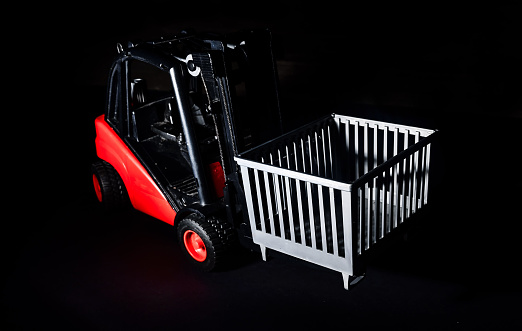The most frequent forklift mishaps are forklift overturns, being struck by a forklift, and falling from a forklift. However, these forklift hazards may all be avoided with a little forethought and preparedness before and during use. Additionally, crew members need to be educated on frequent forklift hazards that might occur at any time and the regular forklift training. You may check out our forklift safety guide below for more information on things to watch out for it in the workplace.
- Add-ons
The attachments and the forklift itself might also represent a safety risk if they are not properly maintained. Forks that are worn and chains that are stretched can put you in danger of an accident. Perform an extensive inspection of the lift before beginning the work. This verifies that all of the components are working properly and safely.
It’s also important to make sure you’re getting the correct type of forklift and accessories for the work at hand.
- Refueling risks
There are potential dangers to refueling and recharging due to the flammability risk of gasoline. Battery charging produces flammable gas from the combustion of diesel and propane and the flammability of diesel itself. When it comes to refueling or charging, you should never light up. Toxic gases, such as carbon monoxide, can build up due to poor ventilation, which increases the risk of fire.
- Maneuvering threats
Using a forklift safety cage incorrectly can result in serious injury or death. If drivers aren’t paying attention to their surroundings, they could potentially collide with objects like people and other tools. Forklift driving is challenging because you’ll be driving in reverse for much of the time because of the obstructed view from the weight. When a forklift is equipped with rear-end steering, it can perform sharp turns at the front while also swinging widely in the back. The lift’s speed is another forklift risk to keep an eye out for.
- Blind areas
Visibility can also be impacted by bad lighting and weather conditions. Forklift operators should also familiarize themselves with the path they’ll be taking on the job to avoid any blindspots, impediments, and other hazards. The total work area should be blocked off if possible so that employees may guide people away from any potential danger zones. The forklift gas bottle storage cageneeds to be placed correctly as well.
- Floor
Several forklift hazards might be found near the worksite. If debris, puddles, uneven ground, and other floor barriers aren’t addressed right away, they can lead to falls or overturning’s. To begin the project, you should remove all of the obstacles on the ground and plan to prevent any floor obstacles that are impossible to solve. It is also important to place the forklift safety cagesecurely as well.
- Loading and unloading
A forklift hazard can arise from the weight and size of the cargo you’re transporting. Before moving the forklift, make sure your shipmentis safe and not overflowing its capacity. Overturns and other mishaps can occur as a result of any of these factors. Carrying hazardous products necessitates extra attention due to the potential for spills and drops, putting the entire work area at risk. This is equally important in using the forklift gas bottle storage cage.
